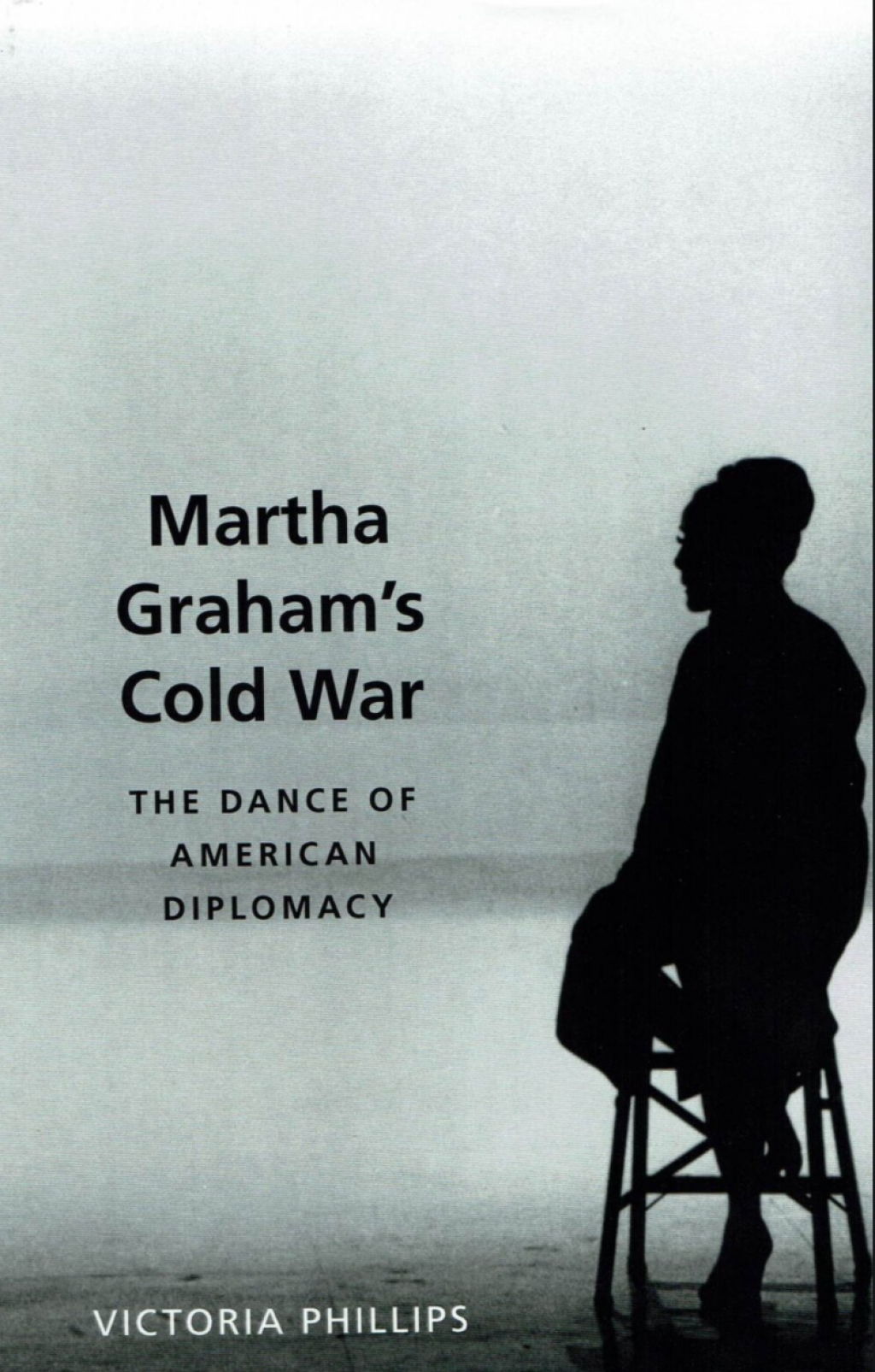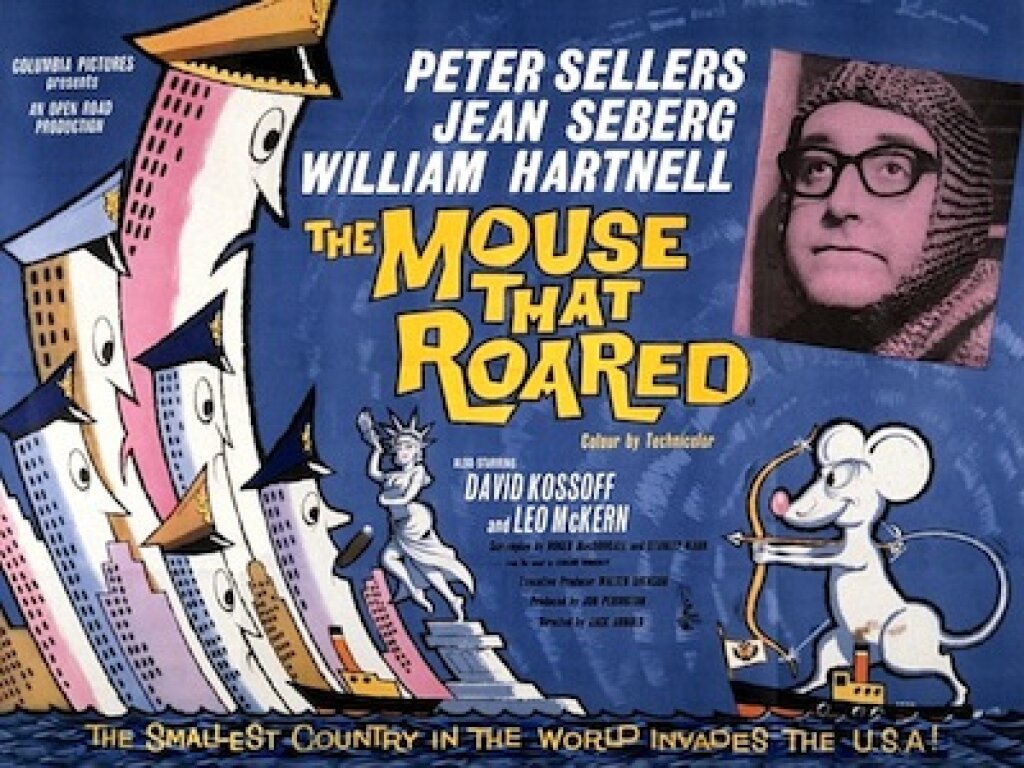This is Part I of a three-part series. Part II will follow on Wednesday, 4/15, and Part III on Thursday, 4/16.
This week, All the Russias is delighted to feature excerpts from Victoria Phillips' book, Martha Graham's Cold War: The Dance of American Diplomacy, out in 2019 from Oxford University Press. Victoria Phillips is currently teaching at Corvinus University, Budapest, with the sponsorship of the European Institute at Columbia University, is associated faculty at the Harriman Institute, and will join the London School of Economics Department of International History in the fall of 2020.
Martha Graham's Cold War frames Martha Graham's brand of dance modernism as pro-Western Cold War propaganda that the US government used to promote American democracy. Phillips argues that Graham's choreography, which placed timeless and seemingly apolitical female protagonists at the center of canonical Western stories, glorified the putatively superior political and cultural values of the Free World. Focusing on powerful, yet not demonstrably American female characters, the stories Graham danced seduced and captured the imaginations of elite audiences without appearing to force a specifically American agenda.
The below segment derives from the book's coda, "American Document and American Icons: 'Grahamizing and Americanizing' the Russians for the Soviet Stage."
On March 30, 1989, just months before the fall of the Berlin Wall, First Lady Barbara Bush received Martha Graham at the White House for a social call and a discussion of Graham’s upcoming tour, again “behind the Iron Curtain.” They exchanged gifts, as etiquette would demand. Yet they also broke with protocol as they played with the Bush dogs; a relaxed familiarity infused the women’s smiles as the new pups jumped on Graham’s lap. Millie, the mother, would became “the most famous White House dog in history” when in 1992 Barbara Bush proclaimed that Millie understood more about foreign policy than her husband’s political opponent, Bill Clinton, who would win the presidency after Graham’s death. But in the moment, Graham reigned. Barbara Bush, who suffered no fools, sang the modernist’s praises: “Her remarkable talent, grace, and beauty is still evident in everything she does.” Upon arriving home in New York, Graham sent the first lady the requisite piece of jade from an earlier tour, a necklace, with “a very special note.” In May, Bush wrote to Graham as “My dear friend.” Although typewritten, Bush added in her own hand, “[The jade necklace] is so lovely … especially because it came from you. Thanks.”
By June, the Graham company tour seemed assured: they would return to Poland and Yugoslavia, perform in Czechoslovakia and Hungary as Graham had proposed in earlier years, and then move into Russia, appearing in St. Petersburg and the political center of the Soviet Union, Moscow. The tour would return to two old haunts, despite newly released books in Poland that called Graham’s 1962 performance of Phaedra “old-fashioned,” even compared with works presented by American Ballet Theatre (ABT) and Jerome Robbins’ Ballets USA. While Robbins “introduced a new path,” Graham was stuck on modernism: “[Graham] was educated and started her artistic career [in the 1930s]—and as far as technical measures are concerned—she goes back to that time.” Another Polish author called Graham “a hot-headed modern American dance priest.” Yet in Yugoslavia, Graham had a standing reputation in with her festival appearance in the late 1960s featuring her young troupe. For the State Department, Czechoslovakia and Hungary continued to show political promise as disruptive states for the Soviets, and Radio Free Europe (RFE) programming could promote Graham. Russia would pose the most difficulties, although other companies had been celebrated in the two cities, including Lucia Chase’s ABT, Kirstein and Balanchine’s New York City Ballet (NYCB), and, in the realm of modern dance, Alvin Ailey Dance Theater. Indeed, the Soviet ballet defectors remembered performances of NYCB and Ailey there, and commented on their importance.
Technical difficulties could be overcome and negotiated for Graham and others. The stages were raked, a common technical hurdle for ballet companies, and the angle made the tilts in Diversion of Angels a particular gravitational challenge, along with the split falls in Night Journey, and the floor work in Acts of Light, yet the company had tested experience in Europe. The biggest challenge offered by the touring was appropriate housing for Graham; in Moscow, officials insisted that Graham live in a well-appointed apartment, but that would require the ninety-five-year-old woman to climb several long flights of stairs. While Linda Hodes sorted out the details as had Craig Barton in the 1950s as Graham’s “Advance Man,” plans seemed to be firming. Although full funding had not been firmly secured, private donors had fallen in with government programming in the past. Moscow seemed ripe with opportunity: McDonalds had arrived with great fanfare, and burger diplomacy was hot. Waiting in the airport, Hodes spotted another American. Striking up conversation, he told her that he, too, was a scout. He worked for financier Donald Trump and was looking for deals. “Golf courses,” he said to Hodes. Yet like Graham and McDonalds, he had bigger plans for Americana in Russia with trickle-down diplomacy, government and private sector partnerships, the youth, sightseeing, pick-up tours, and the architecture of diplomacy.
Like Graham with Baryshnikov, Trump too, would be dancing with the Russians in Moscow in the late 1980s. It also began with elite people-to-people exchange and partnerships. “A prominent business man who does a lot of business in Russia calls to keep me posted on a construction project in Moscow,” he wrote in his datebook one Wednesday at 2:30pm in 1987. He continued, with government meeting the private sector, “The idea got off the ground after I sat next to the Soviet ambassador, Yuri Dubinin, at a luncheon.” With the importance of the youth acknowledged, he notes that the daughter of the host encouraged the project and, “One thing led to another and now I’m talking about building a large luxury hotel … in partnership with the Soviet Government.” A trip for Trump was planned by 3:00pm. Like the Graham company on their tours, he went sightseeing in Moscow. “It was an extraordinary experience,” he wrote. Unlike Graham, Trump was offered a suite in the National Hotel, indeed, Lenin had slept there. Like Dulles’ Congress Hall, he, too had his eye on the Kremlin with the hotel site “across the street.” He also considered several sites near Red Square. And like Graham’s plan, relentless planning continued.
Planning her tour, Graham’s Americana next to the renewed and vigorous repertory would top the list of offerings along with the aura of theatrical glamour, and, most importantly, Graham was bringing the Russian ballet star back to the Soviet Union, with Mikhail Baryshnikov starring—if only on film. In a bold move at ninety-five years of age, Graham declared that she would be coming out of retirement as a dancer to film herself performing with Baryshnikov in Acrobats of God. She explained that it was “not terribly much movement for me,” and that the Soviet defector would be by her side. “Will I be able to encompass it?” she asked, as though recalling the State Department reports from the 1960s, and replied to her own question, “It is in the lap of the Gods.”



